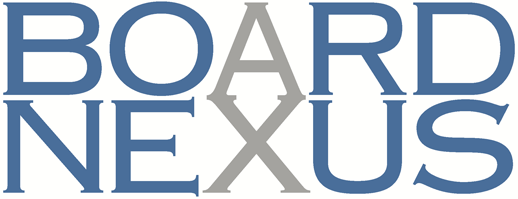The role of the board is to signal to the management that digitalization is something they need to look at. “We should not tell them how to do it, just tell them to look into it.”
Those are the words of veteran chair Sören Mellstig. In his view, the board only needs to have sufficient knowledge of digitalization to be able to ask the right questions. “It’s impossible for a chair to master all fields of expertise connected to a company. That includes digitalization. Instead, you need to have good general knowledge, a thorough understanding of the business and plenty of experience.”
Sören Mellstig has extensive experience within Swedish industry, including six years as CEO of the global medical company Gambro. For the past twelve years, he has been an independent board member with a focus on life science. Until a year and a half ago, he was chair of the board of Trelleborg, a global engineering group focused on polymer technology.
Mellstig promotes a doubly forward-oriented focus for the board: a clear view of what’s most important and where change has to happen; and good insight into the possibilities and threats that digitalization offers the company.
Setting the agenda is one of the most important tasks for a chair. Digitalization climbs to the top of the agenda when it’s a vital part of the company strategy. When it’s not, other strategic issues may require the board’s attention. The importance of digitalization depends on the industry, Mellstig emphasizes.
Driving change and strategy through analysis
“I always try to make sure we are discussing the right things”, says Mellstig. “Setting the agenda should not be left to the CEO”.
“The planning starts with the annual wheel of quarterly reports, and then you need to look at HR, quality, finance, innovation and usually a number of profit centres. Also, you take selective deep dives into different business units. As a chair you need to identify and prioritize which other areas need to be looked at. You also have a backlog of things that need to be followed up.”
He likes to spend what he calls a disproportionately large amount of time on the original analysis of each business unit. “We perform a SWOT analysis and try to identify crucial questions. Then we discuss how to handle them, and together with the management we agree on a plan which we then follow up.” These discussions can also lead to a new or revised strategy.
Why is the original analysis so important?
“Because that’s where you find the answers to the most important questions. And because I want a brutally honest analysis of the situation. Creating good strategies is not difficult. The hard thing is seeing them through. And an honest description of the current reality is crucial if you want the organization to change.”
The same process for large and small – but the content may differ
Sören Mellstig doesn’t see any major differences between chairing small companies and large ones. The priority is always the same: making sure that the right issues are on the agenda.
“My method is the same regardless of the size of the company, but the issues we end up prioritizing are quite different.”
The strategic position of the company also has an impact. The top priorities can depend on the business: does the company have multiple businesses or just one? As an example, Sören Mellstig compares the giant Trelleborg, (turnover 3,200 million euros in 2018), to the much smaller medtech company Cellavision, (turnover 34 million euros), which he chairs today.
Trelleborg has three business areas and more than twenty individual businesses, some of which have their own balance sheets. In 2008, the company was undercapitalized and the automotive business was running at a loss. The important question was how to turn it around.
“We made several acquisitions and divestments and performed a new share issue. The board closely followed a programme initiated by CEO Peter Nilsson called operating excellence. We selected some businesses for closer scrutiny. The tractor tyre business was consolidated, and attention shifted from procurement to customer relationships. Offshore business became another priority.”
In Sören Mellstig´s current role as chair of the medtech company Cellavision, the challenges are quite different. There is one core business: automated digital analysis of blood samples, a technology that replaces manual microscopy.
“We are a digital front runner. For the past five years, the board has focused on innovation, sourcing, internationalization and distribution. Now, we have added a complementary business, as we have acquired a company that contributes 25 per cent of the turnover.”
He promotes using internal and external benchmarks as a pressure test for the business. “At Gambro, the board compared clinics in the US with each other. At Apoteket Hjärtat, (a Swedish pharmacy company), we looked at the 20 worst performing pharmacies.”
The role of the board in digital transformation
Mellstig emphasizes that the digitalization we see today did not happen suddenly – it’s been going on for decades. What is new, however, is the increased power of technologies such as machine learning and the advent of 5G.
His view is that the role of the board with regard to digitalization is to urge the management to look at what’s happening and what impact it will have on the industry and the company.
“Digitalization must be one of the items on the agenda. You need to innovate your business model. Because if you don’t, someone else will. You need to think about where in the chain you can benefit from emerging technologies. Can they increase efficiency or improve our offer to customers? Do we see disruption happening now or looming around the corner?”
Mellstig encourages trial and error, and he gives an example from his time at Trelleborg. The initiative for digitalization at Trelleborg came from the CEO Peter Nilsson, rather than from the board. In 2011, the board of directors gave Peter Nilsson the green light to invest in new user interfaces for clients.
“We didn’t know if it was the right solution, but we had to try. I told Peter to do it but to realise that the money spent is a sunk investment. You can’t wait three years and think that you will find the optimal client interface. You have to be out there trying.” The board encouraged Nilsson’s programme and followed its progress annually.
Keeping track of the competition is also vital in a fast-moving business environment. “At Cellavision, we monitor a number of competitors and distributors and bring them up for discussion at every board meeting. Our technology for blood analysis is unique and, so far, our competitors have failed – touch wood.”
Digital competence on the board
What level of digital competence does a board need today? And who is responsible for ensuring that the skillset is appropriate?
“This discussion should start when forming the board”, says Mellstig, “but the nomination committee should not look for digital experts, as they may not be able to contribute in other areas.”
As the chair of a board, you need to ensure that the board understands the power of digitalization. The important thing is that the board asks the right questions.
“That may require deep insight into the business, combined with curiosity and a desire to understand how technology can make a difference, regardless of whether its AI or 5G.”
Digitalization not always a top priority for the board
In some industries, digitalization is not at the top of the agenda. Mellstig names the care provider Humana, another company where he is chair of the board, as an example.
“Digitalization is limited in this industry so far. It’s there, of course – I visited a new retirement home today, and they had placed sensors on the wall that send an alarm signal if the client gets out of bed at night. But there are other things that we need to get done at Humana before we focus on digitalization. We have a plan for the coming two years, and we have a plan for years three to five. Digitalizing aspects of the care process may become part of our growth process.”
The responsibility for ensuring that Humana’s staff has the right skills to meet the future challenges lies with the management. “The main initiative lies with the CEO, but the board keeps track of what’s happening. At Cellavision on the other hand, it might be critical, and then the responsibility is shared with the board.”
“You need to show humility and to listen well”, Sören Mellstig concludes, “while at the same time being pretty tough and decisive to make sure things really happen”.
Photo by Claude AI

